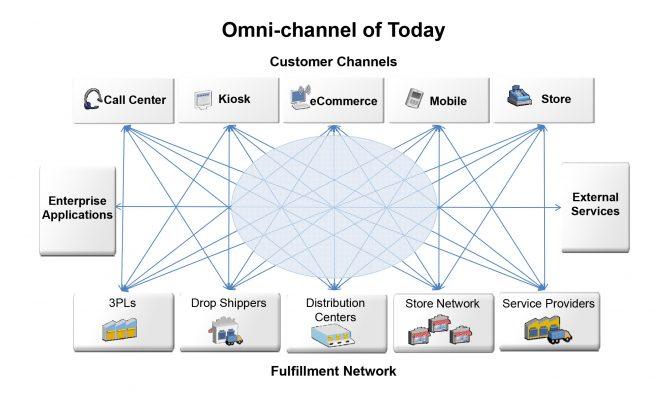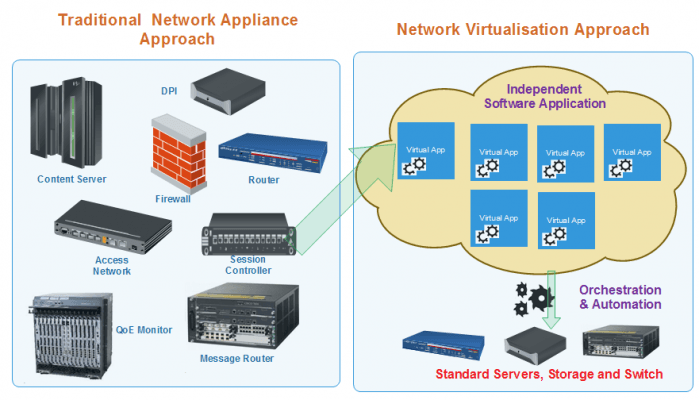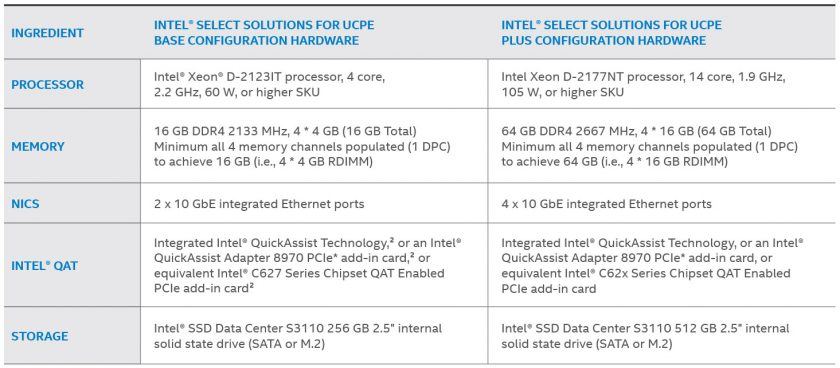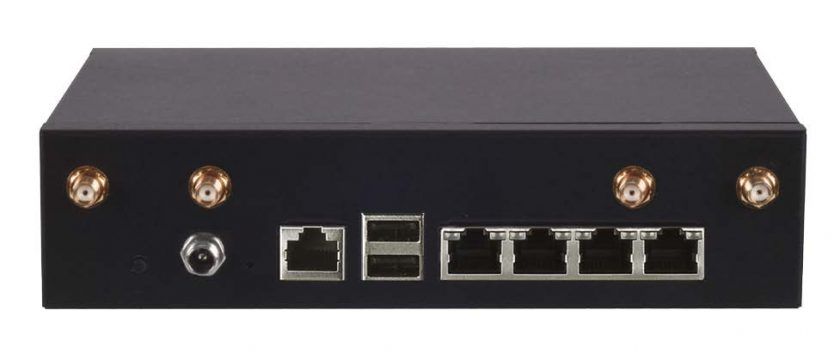How SD-WAN Powers Unified Commerce

To prosper in today’s rapidly changing retail environment, merchants must meet customers on their terms. This means engaging consumers via social media, mobile commerce, text messaging, email, and other channels—including traditional brick-and-mortar shopping.
It also means retailers need reliable network infrastructure that supports storefronts, websites, apps, call centers, manufacturing facilities, and other supporting services. As shown in Figure 1, these different arms of the unified commerce environment must be able to communicate quickly and reliably to ensure fulfillment.

These departments each rely on different types of connectivity. For example:
- Fixed broadband for office settings
- IP-encapsulated fieldbus protocols for industrial facilities
- Bluetooth, Wi-Fi, and cellular for certain retail POS systems or connected shopping experiences
Beyond the different network topologies, types of connectivity, and quality of service (QoS) requirements, these channels and service departments also require an array of network services. These can include firewalls, deep packet inspection (DPI), wide-area network (WAN) optimization, routing, and a host of other functions. In traditional network architectures, such services require specialized, dedicated hardware appliances that add significant cost and network complexity.
Managing these networks and services can be cumbersome—especially in large or rapidly growing retail organizations—detracting from a company’s core mission of selling merchandise.
Software-defined WANs (SD-WANs) can offload the burden of managing these complex networks internally, and reduce the cost of network services. When paired with universal customer premises equipment (uCPE), SD-WANs also improve network flexibility and reliability to keep lines of communication open for customers.
SD-WAN for the Shopping Experience
Previous articles have addressed the elasticity provided by SD-WANs. The technology uses a software-based traffic orchestration and management controller, which allows multiple forms of wired and wireless connectivity to be routed through a network using general-purpose uCPE hardware.
Communications technologies supported by SD-WAN include MPLS, broadband, cable, Wi-Fi, and LTE links (Figure 2). As a result, voice and data traffic can always be sent over the most-optimized, highest-bandwidth path based on an application’s QoS requirements.

The hardware architecture that supports SD-WANs leverages software-defined networking (SDN) and network functions virtualization (NFV) from the data center. Here, uCPE provides a powerful yet flexible general-purpose networking platform that can support a variety of network services as virtual network functions (VNFs). uCPE therefore replaces the expensive, complex hardware appliances mentioned previously (Figure 3).

For merchants and the network service providers supporting them, SD-WANs present an optimal solution for diverse networks with specialized requirements and the need for reduced cost and complexity.
In response, network equipment providers (NEPs) are bringing scalable uCPE solutions to market for companies looking to deploy SD-WANs across retail operations.
A Universal Platform for Retail Innovation
For instance, Intel® and partners like Lanner Inc. have collaborated on Intel® Select Solutions (ISS) for uCPE to accelerate SD-WANs in large-scale deployments like call centers, manufacturing facilities, and retail complexes. ISS for uCPE platforms are scalable systems based on multicore Intel® Xeon® D processors and a suite of complementary networking technologies.
Figure 4 outlines the minimum hardware requirements of ISS for uCPE solutions, which are available in Base and Plus configurations.

As shown in the table above, any ISS for uCPE product delivers at least a quad-core Intel Xeon D processor. This provides ample performance for packet acceleration, but also ensures that cores are available to host VNF services. For example, one core could be dedicated to network orchestration and management while the others support a firewall, DPI, and QoS monitoring.
Furthermore, ISS for uCPE systems are packaged with the Intel® Data Plane Development Kit (Intel® DPDK), a packet processing software suite that optimizes network communications. Intel and its partners achieved 100 percent line rate packet processing performance by tuning these hardware and software components, which is now a standard qualification for all certified ISS for uCPE solutions.
For merchants, this means that critical data can be passed among various retail centers, service departments, and fulfillment centers in real time so that sales aren’t lost and issues are resolved swiftly.
In addition, all ISS for uCPE systems integrate Intel® QuickAssist Technology, a hardware acceleration feature that offloads encryption and compression workloads. This helps ensure that data remains secure as it traverses the retail infrastructure. And it keeps primary processor cores dedicated to the SD-WAN orchestration and virtual functions that keep operations humming.
ISS for uCPE platforms hardware and software stacks are tested, validated, and certified by Intel, assuring retailers that their SD-WAN investment will remain sustainable regardless of the source.
Off-the-Shelf uCPE Solutions for Unified Commerce
One of the first ISS for uCPE solutions is the Lanner NCA-4020, a 1U networking appliance that features four 16-core Intel Xeon processors and supports both the Base and Plus configurations (Figure 5). From this baseline of quality and performance, retailers can begin taking advantage of SD-WAN capabilities today and scale to meet demands of the future.

Store owners looking for a more gradual transition to uCPE may opt for Lanner’s entry-level LUNA D-125 white box networking appliance (Figure 6). Based on a dual-core Intel Atom® C2000 processor, the LUNA D-125 can facilitate network management or orchestration tasks on one core while reserving the other for VNFs such as security.

For its part, Lanner applies extensive testing, verification, and validation practices of its own to ensure system quality in systems like the LUNA D-125.
Regardless of performance level, operators and IT departments will appreciate the use of Intel architecture-based systems throughout the SD-WAN infrastructure. This commonality provides greater software reuse, time to market, and manageability for the lifecycle of unified commerce deployments.
Platforms like the LUNA D-125 can be dropped into small offices or storefronts to begin the transition to flexible networking, setting the stage for more powerful, versatile ISS for uCPE solutions like the NCA-4020 where and when they are needed.
uCPE for SD-WAN: Good, Better, Best Retail Connectivity
As retailers begin demanding high-throughput, reliable, and secure communications to support advanced functionality like retail analytics and augmented reality, the scalability of Intel-based technology provides a smooth migration path. The software-defined and virtualization-enabled architecture of solutions like ISS for uCPE also means that workloads can be modified on the fly as use cases change or emerge.
The retail market is ready for the cost and flexibility advantages of SD-WAN. The time for retail innovation at the edge is now.